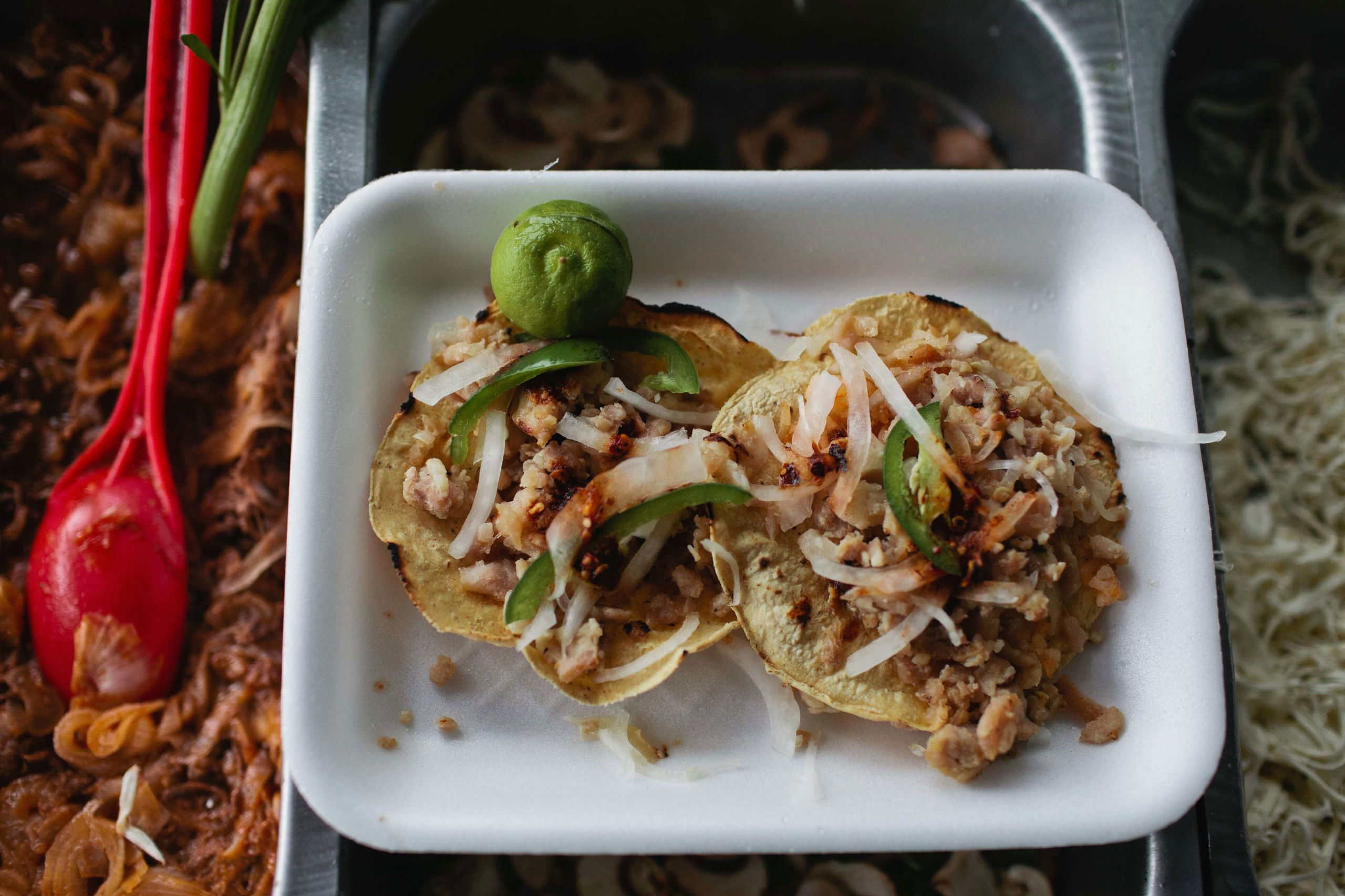
To understand Mexican cuisine is to understand fusion—not as trend, but as inheritance. Long before global chefs co-opted the term, Mexico was already absorbing and transforming flavors from every direction: Indigenous, Spanish, North African, French, Lebanese, Chinese. Nowhere is this more visible—and more delicious—than in Mexico City.
It’s a capital shaped by conquest, trade, migration, and reinvention. In the hands of talented chefs, these layers of history become edible narratives—stories of resilience, imagination, and cultural complexity served on handmade tortillas or tucked inside vapor clouds of tamal steam.

What Food Is Mexico City Known For?
Ask ten locals and you’ll get ten different answers: tacos al pastor, mole poblano, quesadillas with squash blossoms, pan dulce with café de olla. But the better question might be: Why is Mexico City known for so many iconic dishes?
The answer lies in geography and history. The Valley of Mexico was once home to the Aztec Empire, whose markets overflowed with wild herbs, edible flowers, insects, and amaranth. After the Spanish arrived, these native ingredients fused with European ones—wheat, pork, garlic, dairy—forever changing the culinary landscape.
And over time, each wave of immigrants left a new trace on the palate.
The Indigenous Roots of Mexican Cuisine
At its foundation, Mexican cuisine is Indigenous. Corn, beans, squash, chiles, avocado, and cacao are not just ingredients—they’re sacred, ancestral, central to identity.
Corn, especially, tells a story. It’s milled, nixtamalized, hand-pressed into tortillas, tamales, sopes. It’s ground with cacao for atole, fermented for pozol, and folded into every layer of daily life. Walk through any traditional market in Mexico City and you’ll see its many lives: blue, white, yellow, red—each with a distinct flavor and purpose.
On our culinary tours of Mexico City, we explore this origin story firsthand—visiting tortillerías still using heirloom corn, cooking with chefs who understand that masa isn’t just a base, it’s a philosophy.
Spanish Influence: From Olive Oil to Sweet Breads
The arrival of the Spanish in the 16th century brought pigs, dairy, sugarcane, cinnamon, and rice—foods that deeply shaped Mexican cuisine. Think cochinita pibil slow-roasted in banana leaves, flan with burnt caramel edges, or the rice-based horchata that cools your tongue after a spicy meal.
Even the famed mole poblano from Puebla is an edible archive: Indigenous chiles and chocolate blended with Old World almonds, cloves, and sesame seeds. Legend says it was created for a visiting bishop. Truth or not, the dish perfectly illustrates the blend of cultures that defines Mexican food.


Middle Eastern & Lebanese Contributions
Tacos al pastor—arguably Mexico City’s most iconic street food—originated with Lebanese immigrants in the early 20th century. They brought the vertical spit (used for shawarma) and taught locals to marinate meat and shave it into tortillas. But in true Mexican fashion, the dish evolved: pork replaced lamb, adobo stood in for yogurt marinades, and a sweet wedge of pineapple was added on top.
This fusion didn’t dilute Mexican food—it deepened it. Today, you’ll still find echoes of za’atar in spice rubs, yogurt sauces playing off salsa verde, and sesame seeds sprinkled across everything from moles to conchas.
French Techniques, Mexican Identity
The French occupation of Mexico in the 1860s left a surprisingly delicious legacy. Bakeries selling pan dulce, croissants, and bolillos (Mexico’s answer to baguettes) still dot the streets of Mexico City.
And in more upscale restaurants, the influence is subtle but present: in sauces thickened with roux, in plated elegance, in the reverence for butter and cream. But unlike in Paris, these techniques often share the stage with poblano chiles, huitlacoche, or amaranth—reminders that this is not mimicry, but mastery.
Asian Migration and Chinatown’s Hidden Gems
Mexico City’s Barrio Chino is small, but its influence is significant. Chinese immigrants arrived in the 19th and 20th centuries, and their impact can be found in stir-fried rice dishes, soy-marinated meats, and noodle soups with a Mexican twist.
In recent years, chefs have embraced this legacy more openly, creating dishes that marry umami with masa. On our Mexico City itineraries, we highlight these quiet intersections—dim sum with mole, tacos filled with ginger-laced carnitas.
Global Palates, Local Plates
What sets Mexico City apart is its ability to absorb and elevate without erasing. Ingredients from across the globe are folded into local ecosystems. The result is not just fusion for novelty’s sake—but culinary storytelling that’s grounded in place.
Today’s chefs draw from that deep well of influence. On our food-focused tours, you might dine at a family-run restaurant where a grandmother still makes mole by hand—and then visit a contemporary chef pairing grasshopper tlayudas with natural wine. This is Mexico City in motion. A city where past and present meet at the table.

Join Us at the Table
Our culinary trips to Mexico City, led by tastemakers like Jason Dady, Emma Lipp, and Stephanie Reagor, are designed for travelers who want more than just flavor—they want context. These are immersive, narrative-rich journeys that connect you with the people behind the food, from market vendors to Michelin-trained chefs. You’ll taste mole negro on a shaded patio while hearing about its Oaxacan roots. You’ll meet mezcaleros preserving agave traditions. You’ll cook, laugh, and gather—understanding that Mexican cuisine is not a single voice but a chorus.



